Cymbalta
2018, McPherson College, Kan's review: "Cymbalta 60 mg, 40 mg, 30 mg, 20 mg. Trusted online Cymbalta.".
The thyroid cartilage consists of the laryngeal prominence buy cymbalta 30mg amex anxiety symptoms in women physical symptoms, or “Adam’s apple,” which tends to be more prominent in males. Three smaller, paired cartilages—the arytenoids, corniculates, and cuneiforms—attach to the epiglottis and the vocal cords and muscle that This OpenStax book is available for free at http://cnx. The epiglottis, attached to the thyroid cartilage, is a very flexible piece of elastic cartilage that covers the opening of the trachea (see Figure 22. The glottis is composed of the vestibular folds, the true vocal cords, and the space between these folds (Figure 22. A true vocal cord is one of the white, membranous folds attached by muscle to the thyroid and arytenoid cartilages of the larynx on their outer edges. The size of the membranous folds of the true vocal cords differs between individuals, producing voices with different pitch ranges. The act of swallowing causes the pharynx and larynx to lift upward, allowing the pharynx to expand and the epiglottis of the larynx to swing downward, closing the opening to the trachea. These movements produce a larger area for food to pass through, while preventing food and beverages from entering the trachea. Continuous with the laryngopharynx, the superior portion of the larynx is lined with stratified squamous epithelium, transitioning into pseudostratified ciliated columnar epithelium that contains goblet cells. Similar to the nasal cavity and nasopharynx, this specialized epithelium produces mucus to trap debris and pathogens as they enter the trachea. The cilia beat the mucus upward towards the laryngopharynx, where it can be swallowed down the esophagus. The trachea is formed by 16 to 20 stacked, C-shaped pieces of hyaline cartilage that are connected by dense connective tissue. The trachealis muscle and elastic connective tissue together form the fibroelastic membrane, a flexible membrane that closes the posterior surface of the trachea, connecting the C-shaped cartilages. The fibroelastic membrane allows the trachea to stretch and expand slightly during inhalation and exhalation, whereas the rings of cartilage provide structural support and prevent the trachea from collapsing. In addition, the trachealis muscle can be contracted to force air through the trachea during exhalation. The trachea is lined with pseudostratified ciliated columnar epithelium, which is continuous with the larynx. These bronchi are also lined by pseudostratified ciliated columnar epithelium containing mucus-producing goblet cells (Figure 22. The carina is a raised structure that contains specialized nervous tissue that induces violent coughing if a foreign body, such as food, is present. Rings of cartilage, similar to those of the trachea, support the structure of the bronchi and prevent their collapse. The primary bronchi enter the lungs at the hilum, a concave region where blood vessels, lymphatic vessels, and nerves also enter the lungs. A bronchial tree (or respiratory tree) is the collective term used for these multiple-branched bronchi. The main function of the bronchi, like other conducting zone structures, is to provide a passageway for air to move into and out of each lung. Bronchioles, which are about 1 mm in diameter, further branch until they become the tiny terminal bronchioles, which lead to the structures of gas exchange. This muscular wall can change the size of the tubing to increase or decrease airflow through the tube. Respiratory Zone In contrast to the conducting zone, the respiratory zone includes structures that are directly involved in gas exchange. The respiratory zone begins where the terminal bronchioles join a respiratory bronchiole, the smallest type of bronchiole (Figure 22. Alveoli An alveolar duct is a tube composed of smooth muscle and connective tissue, which opens into a cluster of alveoli. An alveolus is approximately 200 μm in diameter with elastic walls that allow the alveolus to stretch during air intake, which greatly increases the surface area available for gas exchange. Alveoli are connected to their neighbors by alveolar pores, which help maintain equal air pressure throughout the alveoli and lung (Figure 22.
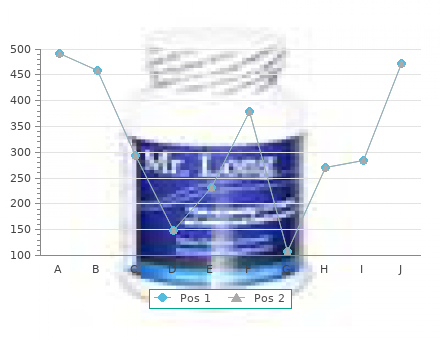
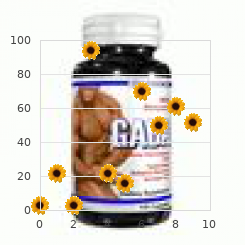
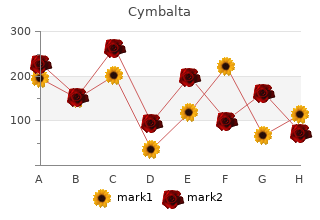
Leukocytoclastic Vasculitis A necrotizing vasculitis accompanied by extravasation and fragmentation of granulocytes cymbalta 20mg discount anxiety symptoms - urgency and frequent urination. Causes include hypersensitivity to drugs, viral infections (eg, hepatitis), and collagen vascular disorders. The most common clinical manifestation is palpable purpura, often associated with systemic symptoms, such as polyarthralgia and fever. Autoerythrocyte Sensitization (Gardner-Diamond Syndrome) An uncommon disorder of women, characterized by local pain and burning preceding painful ecchymoses that occur primarily on the extremities. However, most patients also have associated severe psychoneurotic symptoms, and psychogenic factors, such as self-induced purpura, seem related to the pathogenesis of the syndrome in some patients. Platelet disorders Platelet disorders may cause defective formation of hemostatic plugs and bleeding because of decreased platelet numbers (thrombocytopenia) or because of decreased function despite adequate platelet numbers (platelet dysfunction). Thrombocytopenia Thrombocytopenia is quantity of platelets below the normal range of 140,000 to 440,000/µL. Thrombocytopenia may stem from failed platelet production, splenic sequestration of platelets, increased platelet destruction or use, or dilution of platelets. However, thrombocytopenia does not cause massive bleeding into tissues (eg, deep visceral hematomas or hemarthroses), which is characteristic of bleeding secondary to coagulation disorders. Idiopathic (immunologic) thrombocytopenic purpura A hemorrhagic disorder not associated with a systemic disease, which is typically chronic in adults but is usually acute and self-limited in children. These patients may respond to glucocorticoids, which are often not given unless the platelet count falls below 30,000/µL because these drugs may further depress immune function. However, gold- induced thrombocytopenia is an exception because injected gold salts may persist in the body for many weeks. Heparin-Induced Thrombocytopenia Heparin-induced thrombocytopenia, the most important thrombocytopenia resulting from drug-related antibodies, occurs in up to 5% of patients receiving bovine heparin and in 1% of those receiving porcine heparin. The thrombocytopenia results from the binding of heparin-antibody complexes to Fc receptors on the platelet surface membrane. Platelet factor 4, a cationic and strongly heparin-binding protein secreted from 381 Hematology platelet alpha granules, may localize heparin on platelet and endothelial cell surfaces. Because clinical trials have demonstrated that 5 days of heparin therapy are sufficient to treat venous thrombosis and because most patients begin oral anticoagulants simultaneously with heparin, heparin can usually be stopped safely. Nonimmunologic thrombocytopenia Thrombocytopenia secondary to platelet sequestration can occur in various disorders that produce splenomegaly. In contrast to immunologic thrombocytopenias, the platelet count usually does not fall below about 30,000/ µL unless the disorder producing the splenomegaly also impairs the marrow production of platelets (eg, in myelofibrosis with myeloid metaplasia). In addition, functional platelets are released from the spleen by an epinephrine 382 Hematology infusion and therefore may be available at a time of stress. Splenectomy will correct the thrombocytopenia, but it is not indicated unless repeated platelet transfusions are required. The thrombocytopenia has multiple causes: disseminated intravascular coagulation, formation of immune complexes that can associate with platelets, activation of complement, and deposition of platelets on damaged endothelial surfaces. Patients with adult respiratory distress syndrome also may become thrombocytopenic, possibly secondary to deposition of platelets in the pulmonary capillary bed. Platelet consumption within multiple small thrombi also 383 Hematology contributes to the thrombocytopenia. Platelet Dysfunction In some disorders, the platelets may be normal in number, yet hemostatic plugs do not form normally and the bleeding time will be long. Platelet dysfunction may stem from an intrinsic platelet defect or from an extrinsic factor that alters the function of otherwise normal platelets. Hereditary disorders of platelet function The most common hereditary intrinsic platelet disorders are a group of mild bleeding disorders that may be considered disorders of amplification of platelet activation. Thrombasthenia is a rare hereditary platelet defect that affects platelet surface membrane glycoproteins. Thrombasthenia patients may have severe mucosal bleeding (eg, nosebleeds that stop only after nasal packing and transfusions of platelet concentrates).
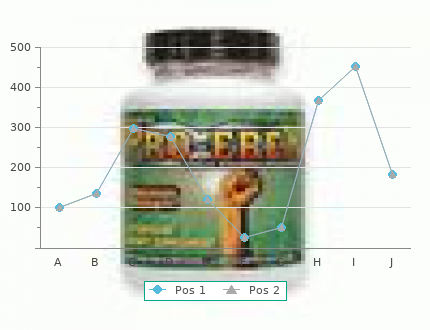
In nervous system best 60 mg cymbalta anxiety group therapy, millions of neurons may be involved in as simple act as walking up stairs. Some intracellular regulatory processes operate at the size scale of individual molecules or ions. On the other hand, of the time and size, the development plan of the human body by the endocrine system involves billions of cells, fulfilled on a time scale of decades. Shows consistency of internal environment of the cell Some terms Used in Control System A “System” is a set of components related in such a way as to work as a unit. A “control System” is so arranged as to regulate itself or another system Some terms used in control systems A”system” is a set of components related is such a way as to work as a unit. A “control system” is so arranged as to regulate itself or another system 42 An “input” is the stimulus applied to a control system from a source outside the system so a to produce a specified response from the control system. An “open loop” control system is one in which the control action depends on (is a function of) output. A “negative feedback” system is one in which the control action is a function of output in such a way that the output inhibits the control system A “positive feedback system” is a closed loop control system in which the output accelerates the control system. All negative feedback system has a controlled variable that is the factor (in the case of homeostasis functions) that the system is designed to maintain. All feedback systems, negative or positive, have a sensor element capable of detecting the concentration of the controlled variable; information gained by the sensor is used to determine the output of the controlling system. Therefore, in a feedback system, there is a sensor element, which detects the concentration of the controlled variable; there is a reference input, which defines the proper control level; and there is an error signal, which is a function of the difference between what the sensor senses the controlled variable and what the reference input determines it should be. The magnitude of the error signal and the direction of its deviations (negative or positive) determine the output of the system. Feedback Mechanisms General Properties of Negative Feedback: Homeostasis demands that important physiological parameters, such as pH, body temperature, body fluids volume and composition, and blood pressure must be maintained with an appropriate limits/range. When a controlled variable departs from its appropriate value, negative 43 feedback provides the means for opposing the deviations. The ideal level of a controlled variable (parameter) is defined as its ‘set- point’. The controlled variable is monitored by specific sensors/receptors that transmit information to an integrator (control center), which compares the sensor’s input with the set-point value. Any deviations from the acceptable value/range gives rise to an’ error signal’ when there is a difference between the set point and the value indicated by sensor/receptor. An error signal results in activation of effectors that opposes the deviation from the set point. The term ‘negative’ is used because the effector’s response opposes the departure from the set point. The effector’s response completes a feedback loop that runs from the controlled variable through the sensor to the integrator and back to the controlled variable by way of the effectors. For example, body temperature is regulated at lower value during sleep and at a higher level during fever. The error signal is proportional to the difference between the set point and the value of controlled variable. Thus, the body’s effectors are usually capable of making larger or smaller efforts, depending on the magnitude of the error signal. Schematic diagram of a negative feedback control 44 Open Loop system Open loop system don’t have negative feed back character. Open loop system can result from disease or damage to some part of the feedback loop. For example, damage to parts of the motor control system of the basal ganglia may result in uncontrolled body movements, as in Parkinson’s disease. Body movements that must occur very rapidly, such as eye movement to follow an object when the head moves, or the boxer’s quick punch in fighting, must be carried out according to a learned pattern because they must be completed before feedback could be effective. The skill attained through learned modification of such open loop system behaviors is called the ‘feed – forward’ component of the effectors command. Positive Feedback: • A change in the controlled variables causes the effectors to drive it further away from the initial value of the variable/parameter • Systems are highly unstable • Effect is like that of a spark igniting an explosion. It is put in use for specific purpose, such as: - Depolarization phase of action potential. Shows the positive feedback mechanism contributes to the rising phase of action potential.
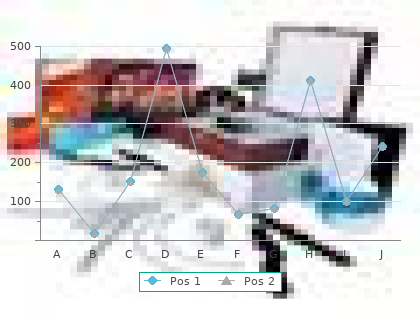
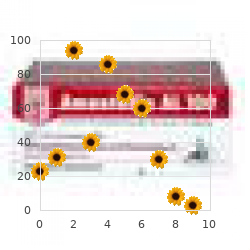
Episodes in which days of supply exceeded the days of follow-up are censored generic cymbalta 40 mg with visa anxiety job; there is insuffcient information to know the length of that treatment episode. There is suffcient information to know that the treatment lasted at least as long as the number of days of follow-up. For each interval, we computed: 1) the denominator (number who could have been treated this long, that is, whose follow-up was not yet censored); and 2) the numerator (number actually treated this long). For example, we evaluated the episode database for boceprevir to see treatments that lasted at least 4 weeks. We counted as the denominator the number of persons still being followed, those who initiated treatment more than 28 days before the last date in the prescription data. We counted in the numerator the number of these persons (with 28 days of follow-up) who had at least 28 days of treatment. Note that it was possible for an individual to have more days of medication than days of follow-up, and that we only included in the numerator those eligible for the denominator. This analysis was repeated for subsequent 4 weeks intervals, until there were no more cases that met the criteria for the denominator (52 weeks). Key Question #2: What will be the health impacts of using either of two available directly acting antivirals combined with pegylated interferon and ribavirin (triple therapy)? Under each combination of treatment and uptake rate, the model produced a set of outputs that were then analyzed to address the Key Question. Computing multiple, annual health impacts over a 5 year horizon: Improving treatment effcacy has the potential to ameliorate a variety of non-fatal and fatal outcomes. Non-fatal outcomes included decompensated cirrhosis, hepatocellular carcinoma, and the need for liver transplant. The analytic plan for Key Question #4 was the same as that of Key Questions #2 and #3 except that the cost impacts over a 5 year horizon were considered. This meant that costs of treatment, contingent on response guided therapy protocols and adherence, were tallied for individuals initiating treatment. Costs depended on treatment effectiveness, as the model tallied the effect of sustained viral response in averted treatment of advanced liver disease. The effectiveness of treatment strategies after the 5 year horizon were not considered, and therefore the estimates are likely underestimate the full lifetime cost effects and do not represent lifetime horizon needed to estimate cost-effectiveness. All cost estimates include both the direct costs of care and the indirect (overhead) costs of providing that care. Even so, if one looks at the proportion of White to African American individuals among those whose race/ethnicity is reported, there is reasonable stability across studies with a ratio of between 2. Few studies report data on liver transplantation, though a review of liver transplant outcomes in African Americans includes information on African American Veterans. However, these data rely on a very small sample 100,000 person years) size and only 6 months of follow-up on average. Studies on treatment uptake also are less straightforward to compare as some report uptake among those who are treatment eligible and some report on uptake among all participants. Long-term uptake among treatment eligible individuals ranges from approximately 20-50% in studies with 30-35% being the most common. We estimated these parameters using the following methods for both standard two-drug treatment and triple therapy. For both standard treatment and triple therapy, we used the race/ethnicity distributions derived as described in the preceding paragraphs. Finally, since the analysis focuses on treatment-naïve individuals and based on the State of Care 2010 report as well as the published literature, we assume that approximately 70% of individuals have not been treated previously. In all scenarios, the comparator was standard two-drug therapy offered to all treatment-eligible patients with the assumption that 2% of this group took up therapy annually over the 5 year window considered in the analysis. The effect of newer treatments and technologies currently in clinical testing contributes to this uncertainty. The analyses consider what would happen over the next fve years if the strategy was switched from standard two-drug therapy to each of the two other alternatives. Tests may be more common in some settings because they are easier to order, because some subgroups of providers are more familiar with their use, or because they are more appropriate in some patient subgroups. Of those who initiated boceprevir, 89% got to 8 weeks, 81% to 12 weeks, 76% to 16 weeks, and 29% to 32 weeks. The medication possession ratio indicated that most patients were highly adherent and that those who continued in treatment flled prescriptions promptly.
9 of 10 - Review by W. Ivan
Votes: 220 votes
Total customer reviews: 220


